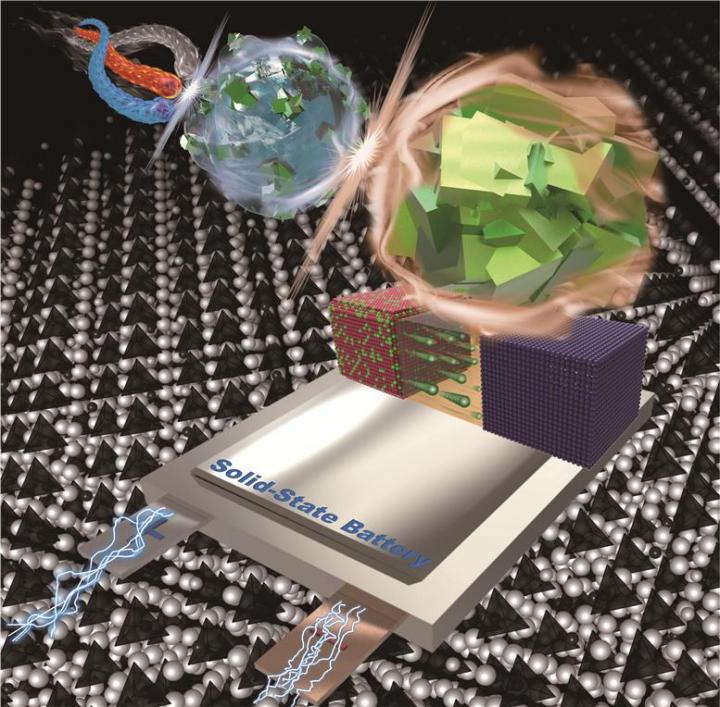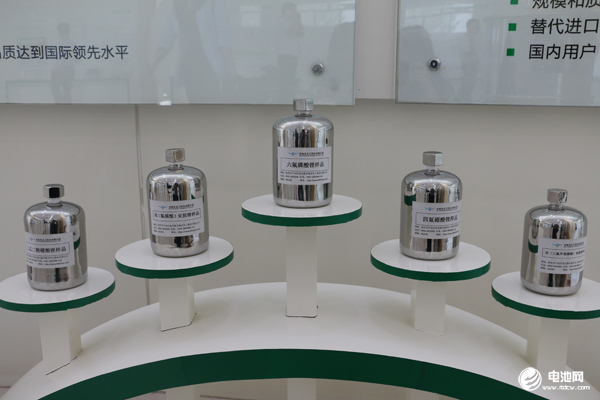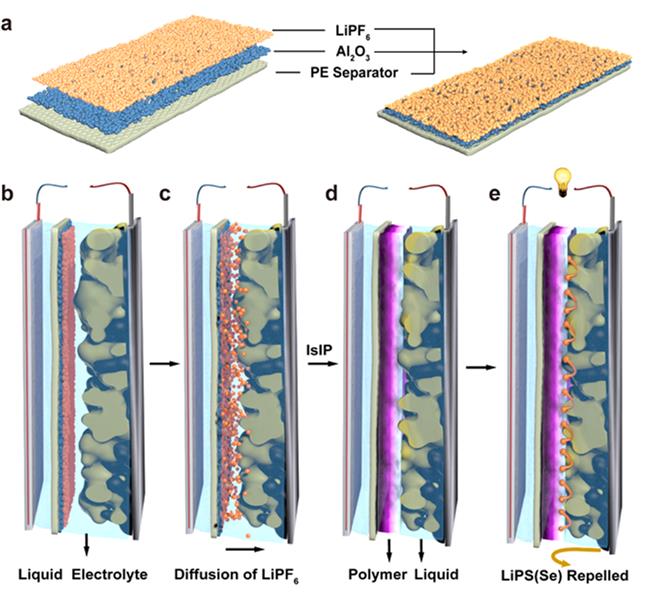2020-05-28

[technology] Kist develops high-performance solid electrolytes whose conductivity is comparable to that of liquid electrolytes
According to foreign media reports, the research team of Dr. hyoungchul Kim from the energy materials center of the Korea Institute of science and Technology (Kist) has successfully developed a sulfide based superionic conductor, which can be used as a high-performance solid-state electrolyte for all solid-state batteries. This new material can make the conductivity of lithium ion reach 10.2ms/cm at room temperature, which is comparable to the liquid electrolyte used in typical lithium-ion batteries. In addition, the research team has also developed a new synthesis technology, which can shorten the processing time of the existing synthesis technology by more than one third. It is expected that this technology will greatly accelerate the mass production of super ionic solid electrolyte materials and promote the commercialization of all solid state batteries.
At present, lithium-ion batteries based on liquid electrolyte are mainly used in electric vehicles and energy storage equipment. However, as the safety of such batteries has been repeatedly mentioned, various concerns about existing batteries using flammable liquid electrolytes have also increased. In order to solve this safety problem, recently, all solid-state battery technology (all battery components are replaced by solid-state materials) has attracted great attention. However, unlike liquid electrolytes in which lithium ions can move freely, the lithium ion conductivity of solid electrolytes is only 1/10 to 1/100 of that of liquid electrolytes because the movement of lithium ions is limited in a hard solid lattice. This has also become one of the most important and difficult challenges in the research and development of solid-state battery technology, and it also has great technical and economic value.
Dr. Kim's research team developed a solid electrolyte with super conductivity by using a sulfide crystal structure called chalcogenite. At the same time, the crystal structure has high lithium ion concentration and stable structure, so it has a high application prospect. However, due to the uniqueness of this structure, the lithium ion is trapped in an octahedral cage located in the chalcogenite crystal, and its lithium ion conductivity is still lower than 4ms/cm. However, the research team has recently developed a new type of lithium ion channel. By applying a technology, chlorine, a halogen element, is selectively replaced at a specific atomic position, so that lithium ions can pass through the octahedral cage. The lithium ion conductivity of the new solid electrolyte material developed by Kist reaches 10.2ms/cm, which is equivalent to the traditional liquid electrolyte at room temperature, and it can still maintain electrochemical stability under various battery working conditions. (source: Gaishi automobile)
[market] the domestic hydrofluoric acid market price is temporarily stable
On May 26, the mainstream price of domestic anhydrous hydrofluoric acid manufacturers was 7500-8500 yuan / ton. The ex factory price of on-site merchants was temporarily stable. The operating rate of domestic hydrofluoric acid manufacturers was general, and the on-site supply of goods was sufficient. The manufacturers reported that the recent hydrofluoric acid losses were serious, and the market price was at a low level in two years. The downstream refrigerant industry demand was poor, and the on-demand procurement was the main focus. The fluorite price was expected to rise recently, It is expected that in the later stage, the market price may hit the bottom and rebound. (source: Business Club)

[company] six major innovative projects support doxorubicin, which is expected to reach a new level
At present, the development strategy of polyfluorodox is being adjusted. The company focuses on four fields, including fluorosilicon new materials, lithium battery new materials, semiconductor field and great health new materials, and pays attention to six innovative projects in the above fields.
First, in the field of fluorosilicone new materials, the electronic grade hydrofluoric acid with multi fluorine has been sold in batches in the semiconductor industry at home and abroad. In addition, through the smart separation of fluorosilicone, the silane and silicon tetrafluoride series products of the subsidiary Zhejiang Zhongning silicon industry have also been developed and applied. It is also the only company in China that sells silane to the solar cell industry, liquid crystal panel industry and semiconductor industry.
The six innovative projects implemented by DFD include the upgrading of fluoride technology, the efficient utilization of low-grade fluorosilicone resources, multi-functional composite lithium salts, electronic grade chemicals, power lithium-ion batteries and health protection industry. Each project has a high technical content, and it is time to blossom and bear fruit. These projects need the support of intelligent manufacturing system and the transformation and upgrading of digitalization. Dover said that he has also made great efforts in digital and intelligent manufacturing.
In addition to these six innovative projects, DFT has also established an innovative platform company, fluoro based new materials. Through this innovative platform, we hope to "make a home for talents, set a price for knowledge, and put wings on innovation". (source: China Fund News)

[technology] the structure design strategy of mixed solid-liquid electrolyte proposed by the Institute of Chemistry
High specific energy lithium sulfur (selenium) batteries have broad application prospects in the next generation of consumer electronic equipment, electric vehicles and large-scale energy storage. However, the dissolution and shuttle effect of polysulfide (selenide) in liquid electrolyte is very easy to cause the continuous decline of battery performance. The research shows that developing solid / quasi solid electrolytes with low solubility of polysulfide (selenide) instead of liquid electrolytes is an effective strategy to solve the above problems. However, the solid state of electrolyte materials may lead to the reduction of sulfur (selenium) utilization and the delay of reaction kinetics, which may affect the performance of the battery. Therefore, how to balance its role in "promoting" and "hindering" the dissolution of polysulfide (selenium) compounds through the optimal design of electrolyte structure is a technical problem that must be overcome in the industrialization of lithium sulfur (selenium) batteries.
Recently, with the support of the National Research Center of Molecular Sciences in Beijing, the Chinese Academy of Sciences, the National Natural Science Foundation of China and the Ministry of science and technology, the guoyuguo research group of the molecular nanostructure and Nanotechnology Laboratory of the Institute of chemistry of the Chinese Academy of Sciences proposed an optimized design strategy for the structure of mixed solid-liquid electrolytes, and developed the in-situ interface curing technology of gel polymers, The balance between electrochemical activity and cycle stability of lithium sulfur (selenium) battery cathode is solved. In this study, lithium hexafluorophosphate, a lithium salt commonly used in lithium-ion batteries, was creatively introduced into the surface of the commercialized diaphragm, and the modified composite diaphragm was used to build a quasi solid lithium sulfur (selenium) battery. By using LiPF6 to initiate cationic polymerization in situ at the electrolyte cathode interface, the gradient solidification of conventional ether liquid electrolytes is induced, so that a gel polymer electrolyte barrier layer is formed on the surface of the cathode, and an appropriate amount of liquid electrolyte is retained inside the cathode. The above electrolyte structure can not only ensure the appropriate dissolution of the internal discharge products of the positive electrode, improve the utilization rate of the positive active material, but also prevent the irreversible loss of soluble polysulfides from the positive electrode and ensure the stability of the electrochemical reaction. The battery test results show that this optimized composite electrolyte enables the lithium sulfur (selenium) battery to achieve a longer cycle life without sacrificing its own capacity. Lithium sulfur cell can produce nearly 1000mahg at 0.5c current density-1Reversible specific capacity, 100% DOD cycle life more than 500 cycles. Lithium sulfur soft pack battery based on this electrolyte can be used in 8mgcm-2Stable circulation under high surface load shows good industrialization application potential. The in-situ interface curing technology proposed in this study provides a new idea for the optimization design of electrolyte structure of the next generation rechargeable lithium battery. (source: Institute of chemistry, Chinese Academy of Sciences)
[battery think tank]Electrolyte market price dilemma is difficult to solve
In recent years, the price trend of electrolyte has continued to decline. Since the beginning of this year, the market demand for lithium battery electrolyte has been sluggish. According to insiders, the phenomenon of selling at a loss has occurred, and the pressure on electrolyte enterprises has doubled. Under the pressure of price war, the progress of enterprise technology research and development is also difficult to achieve the expected effect, and continues to fall into the dilemma of price war.
In addition, the recent fire accidents of new energy vehicles continue, and the development of new nonflammable electrolyte to reduce the risk of battery fire still needs relevant technological breakthroughs.
The good news is that the policy level continues to release signals to support the development of the new energy vehicle industry, and the long-term demand for electrolyte is optimistic.
Article source:Battery net
0755-89480969
info@powercome.hk
B1202, building 1, Mogen Fashion Industrial Park, No. 10, shilongzi Road, Xinshi community, Dalang street, Longhua District, Shenzhen
www.powercome.hk